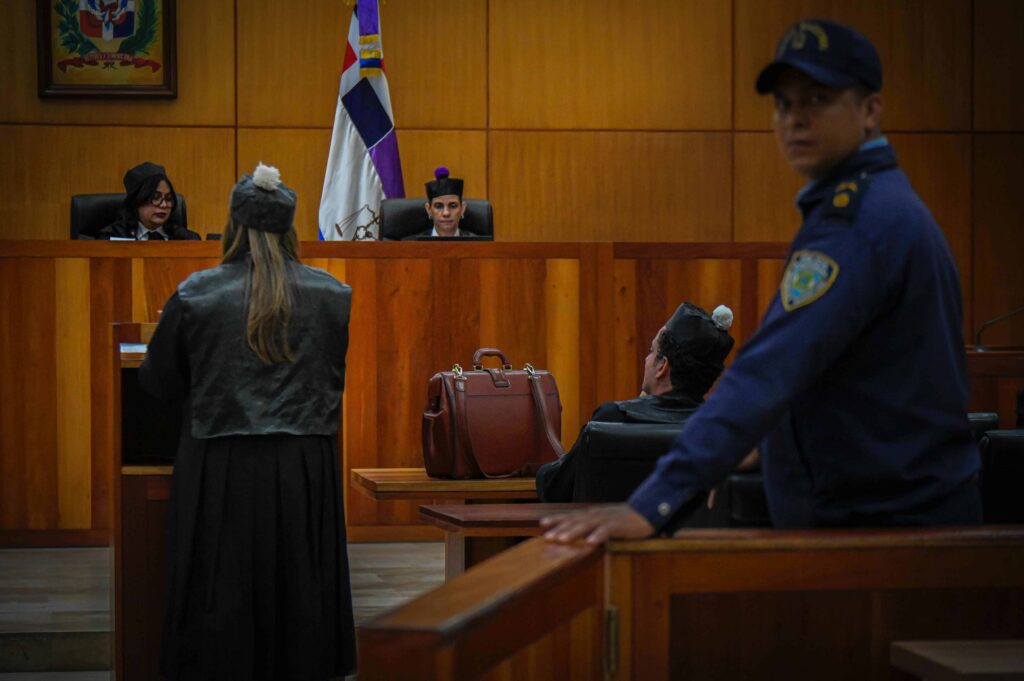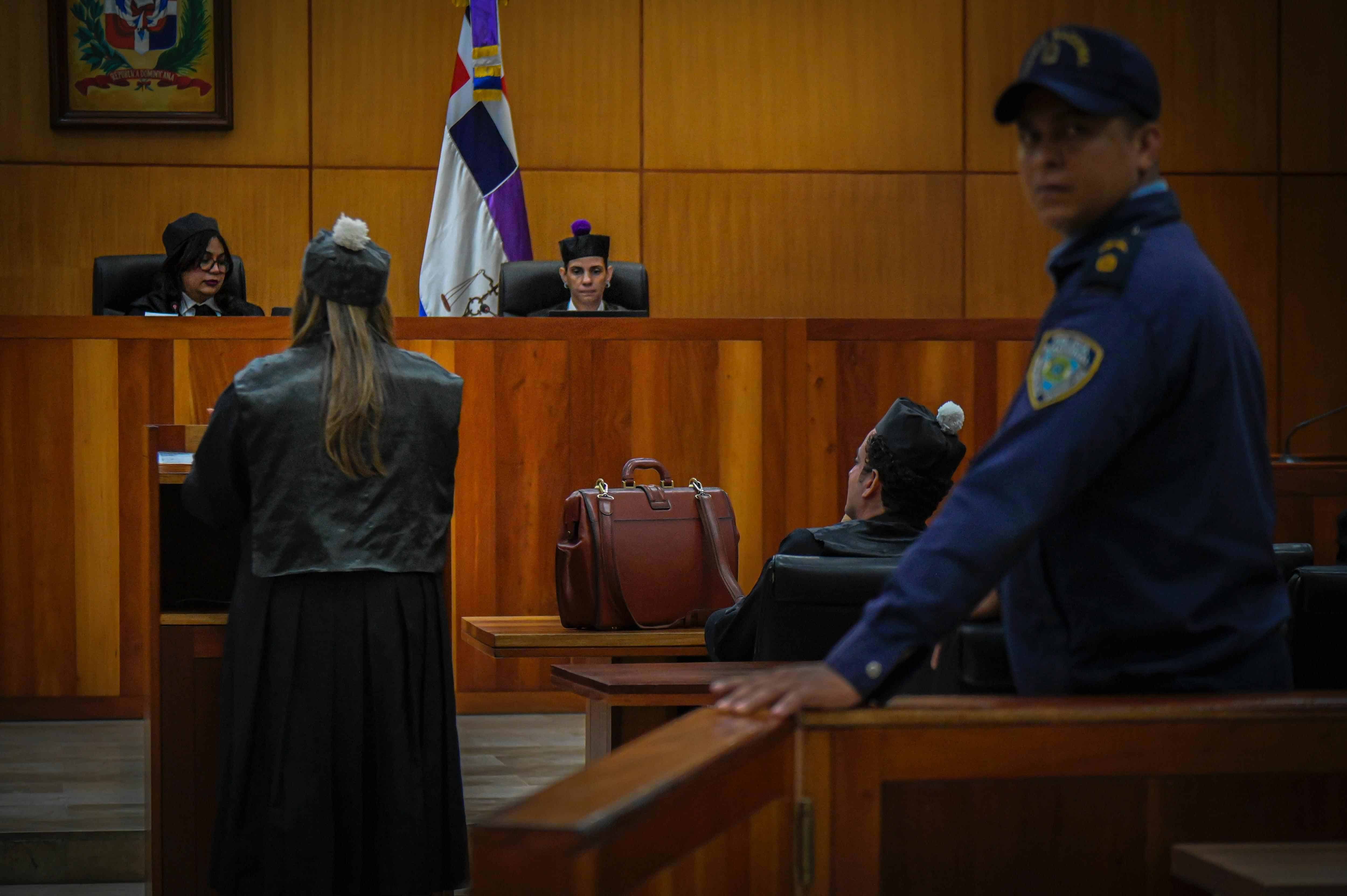
Ten years ago, the Civil and Commercial Chamber of the Court of Appeal of the Judicial Department of San Francisco de Macorís heard a very delicate case of violence childishin which two girls (four and six years old) had fled Venezuela along with their Dominican mother.
While the mother and the girls escaped from the abuse towards the community cibaeña from Las Guáranas, the father requested the country to return the minors under the 1980 Hague Convention. At that time, a substitute judge of that court wondered what was correct.
“Today I am closer to that answer, because it may be that the integrity physics of those girls has been violated, and for us, as the Civil Court of San Francisco de Macorís, it is a very satisfactory decision,” the same judge responds to Free Diary.
The face linked to this case of abuse childishin which the lives of these girls were protected, is that of Judge Martha Díaz Villafaña, who currently presides over that court.
The women are increasingly distinguished in the societyin the spaces decision-making and in the classrooms, a reality that has also extended to the Dominican judiciary.
Since 2013, the enrollment of judges has remained constantly on the rise in all levels of the judicial system, and, according to data from the Judiciaryrepresents more than 62% of the general payroll.
According to these statistics, updated as of September 2024, the total number of judges nationwide is 739, of which 279 are men and 460 are women.
In the country there are 246 judges first instance, which means that this is the degree with the most women of the entire judicial hierarchy. In second place are the appeals courts, with about 135 active judges.
The judges of peace (first step of the judicial career) and the Supreme Court of Justice (SCJ) are the levels with less female presence in the Dominican courts, with a representation 75 and four womenrespectively.
The demarcation with more judges in the country is the National District, with 106 togadas, followed by the provinces from Santo Domingo and Santiago, which have 59 and 50 judgesrespectively.
When analyzing the statistics of the ten provinces with greater amount of judgesit is found that the ages Predominant among these defenders of law and judicial processes are between 40 and 59 years old.
The High Courteousthe challenge of women

Despite the progress and its growing majority in the levels primaries of the justicethe women have not managed to penetrate with the same force into the High Courteous.
The Supreme Court of Justice has four judges of 13; the Constitutional Court has five judges of 13, and the Superior Electoral Court has one judge out of five. What these members have in common is that they were chosen by the same body, the National Council of the Judiciary (CNM).
By consulting several judgesconsidered that the authorities in charge of this decision should be sensitized.
“I would say that this has to do with an issue of mentality of the patriarchal system; this was always a society that saw men as the center. However, women are gaining space”Gender Coordinator of the Judiciary and judge of the Second Chamber of the Supreme Court of Justice
Salcedo is the only one women in the current composition of Advice National of the Judiciary.
With the implementation of the new Constitution, this body is made up of the President of the Republic, who presides; the president of the Senate; a senator who represents the second majority; the president of the Chamber of Deputies; a deputy who represents the second majority; the president of the Supreme Court of Justice; a magistrate of the Supreme Court of Justice, chosen by its Plenary Session, who will serve as secretary, and the president of the Constitutional Court, replacing the attorney general of the Republic.
4
The judges of the Supreme Court of Justice. The registration of the High Court is 13 togados.
“The spaces What we have won has been thanks to our efforts, because we have demonstrated our ability, because we continue fighting and saying the same thing. It’s not just about the High Courteous; the equality and the parity absolute, we must continue to demand them,” the judge reiterates.
Judge Martha Díaz believes that “it is an opportune moment to continue promoting this change in our societyso that the institutions achieve that balanced composition of women and men.”
On the other hand, the Coordinator of the Judicial Department of La Vega considers that, due to the increase in numbers in the judicial ranks and the number of women who enter the National School of Judiciary, “the administration of the justice will be in the hands of women“.
“I think that in a few years there will be more women in the High Courteousbecause to the extent that in the levels basics of the administration of justice most are womenand given that the majority of those who join the Judiciary are womenIn the end there will be so many of us who aspire to a position in one High Court that we will necessarily have to achieve that parity that we have searched for so much,” he explains.
Likewise, Gissel Fernández, judge of the Second Chamber of the Civil and Commercial Chamber of the Court of First Instance of the Judicial District of San Pedro de Macorís, assures that it is a matter of time.
“There will not be the possibility that one is not chosen womenbecause out of ten, we will be nine,” she concludes.



